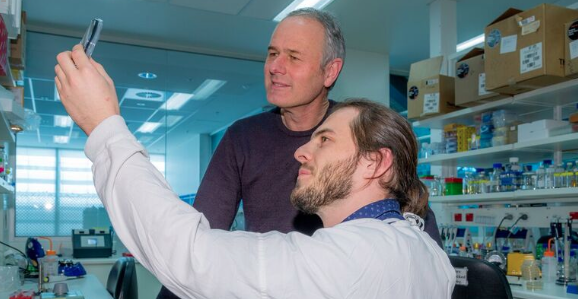Legions of immune cells in the lung keep Legionella at bay

A team of specialist researchers in Melbourne believe they have found a major response that helps keep the Legionella infection at bay.
Immunologists and microbiologists from the University of Melbourne’s Bio21 Molecular Science and Biotechnology Institute and the Peter Doherty Institute for Infection and Immunity – a joint venture between the University of Melbourne and the Royal Melbourne Hospital – have led a study that defined a new cell type responsible for turning the attack back on the bacteria.
With this discovery, they have dissected the complex roles of legions of immune cells that interact to destroy the bacterium. Legionella pneumophila is the bacterium that causes Legionnaire’s disease.
The bacterium preferentially grows within pond amoebae, but can ‘accidentally’ cause serious lung infections in susceptible humans.
It is not passed from person to person, but people contract the disease through inhaling contaminated water, in the form of water vapour (small droplets) produced by air-conditioning units, spas and other water sources.
Legionella causes disease when it invades and destroys our amoeba-like macrophages in the lungs.
A PhD student at the University of Melbourne’s Bio21 Institute, Andrew Brown, used a recent Belgian study that characterised immune cell populations in inflamed tissues as a basis to look at what was going on in the lung when it was infected with Legionella bacteria.
He uncovered a new population of immune cells that was playing a significant role: the monocyte-derived cells (MCs) and showed that MCs responded to Legionella within 24 hours of infection and were present in over 10-fold the numbers of macrophages in the lung by 48 hours after infection.
Rather than the macrophages, it was the MCs that were ‘gobbling up’ and controlling the bacteria.
“This was a surprising find,” Mr Brown said.
“As immunologists, we usually look at what is happening in the immune organs, such as the bone marrow, lymph nodes and spleen, but in this study, we decided to look at what was happening in the tissue at the site of infection,” said University of Melbourne lead researcher at the Bio21 Institute Ian van Driel.
MCs are part of the immune system’s first line of defence against the bacteria and in this case responded to the infection by secreting a chemical messenger called interleukin-12.
This in turn drove T cells to produce large amounts of interferon gamma, another powerful chemical messenger of the immune system that then fed back and instructed the MCs to kill the engulfed Legionella bacteria. All this happened within 48 hours.
“With a knowledge of the immune cell circuitry involved in defence against Legionella, we can understand what an effective immune response looks like,” said Professor Elizabeth Hartland, University of Melbourne lead researcher at the Doherty Institute.
“Knowing this, we can now focus on how to manipulate and optimise the immune response to fight infection.
“With the rise of antibiotic resistance, this knowledge provides avenues for a different approach to fighting acute lung infections, by strengthening the immune system, as well as dispensing antimicrobial agents.
“It may also allow us to give patients a more accurate prognosis for the infection, giving us vital information about when to use antibiotics.”